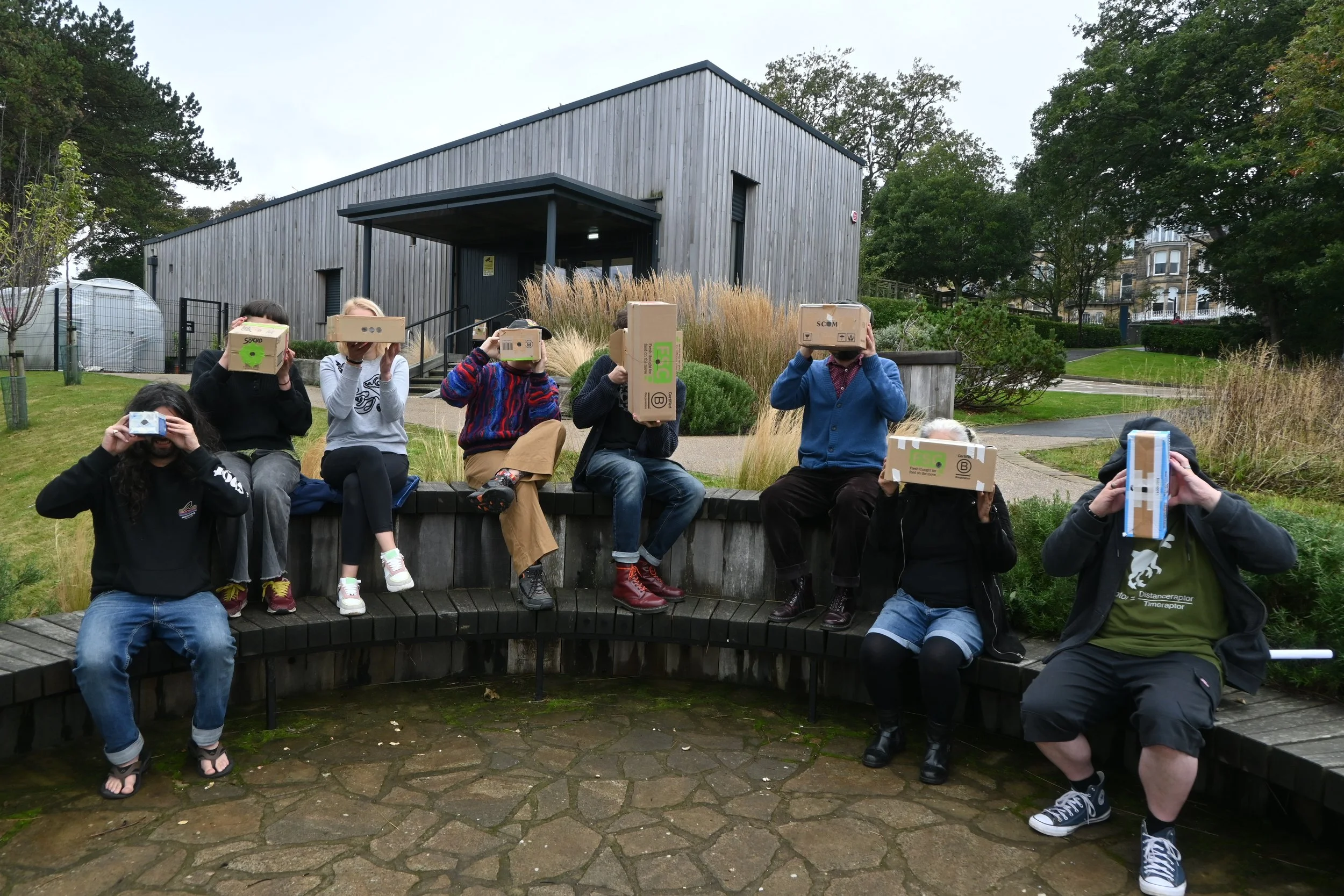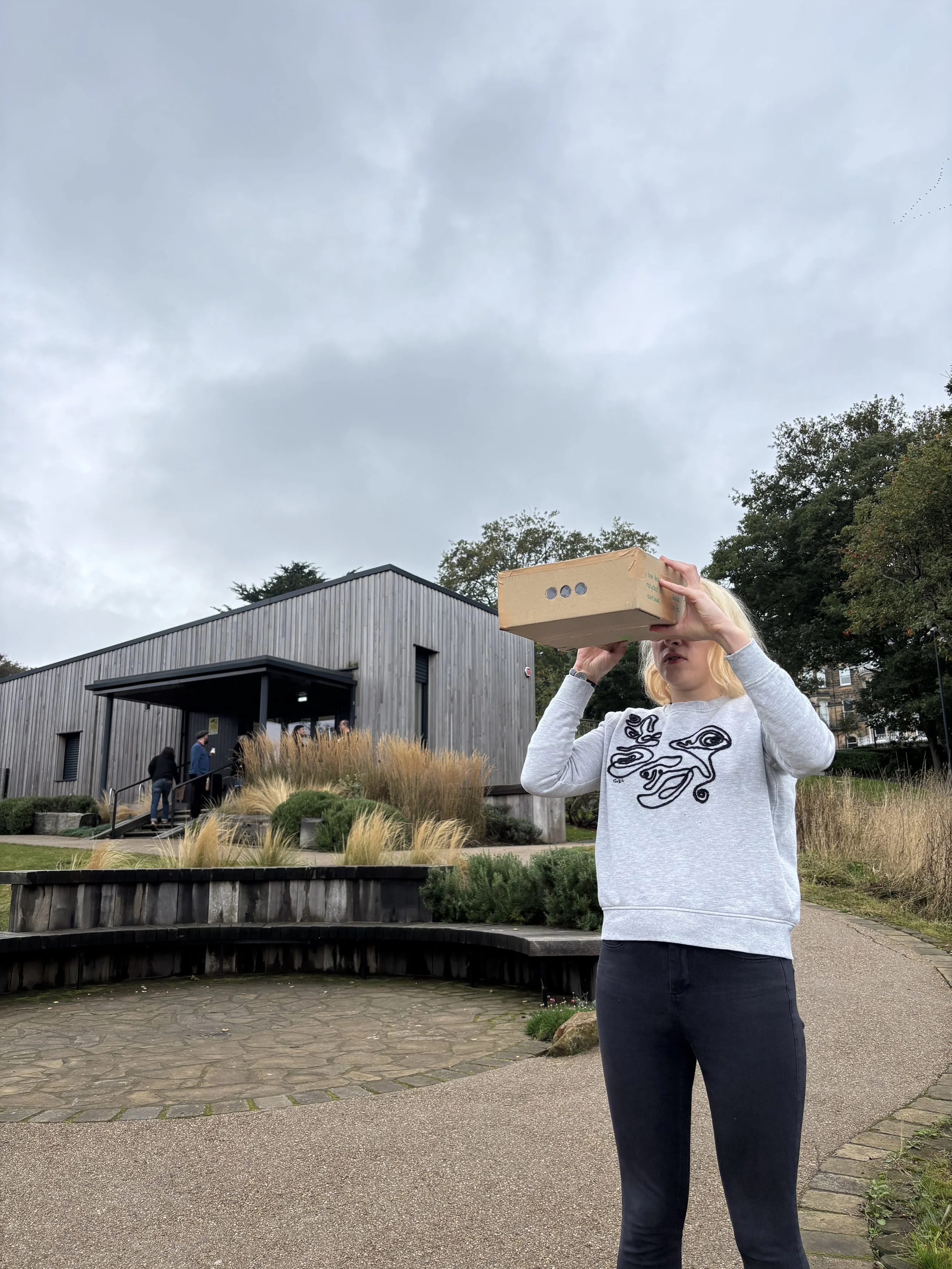How to Make a Camera Obscura
Find out how to make a Camera Obscura, inspired by their history in Scarborough
Group Photo from Camera Obscura Workshop September 2025, Beeforth Hive, Scarborough
As the fog lifted off the sea, we started the day making Camera Obscuras. During this workshop we weaved in the history of Camera Obscuras from the earliest beginnings in ancient China to their first appearance in the town early in the 19 th century. There were at least four camera obscuras built as entertainment for tourists. Little is known about their size and construction. This one, (seen in the image below), with camera obscura written on the roof was in operation at Gala Land opposite the Rotunda Museum from about 1890 until the beginning of World War One.
Image of Camera Obscura in Scarborough (in the left of the postcard)
The well-loved local 19th century artist Atkinson Grimshaw is thought to have used one to create his famous moonlit landscape scenes. The Camera Obscuras we made simple. Each one was slightly different, and the participants experimented by making them different shapes and sizes and even adding extra lenses. They are simple to make. To make one at home you will need:
A small magnifying glass (we bought some online, but you can use any that you might have at home or that you might find in a local shops)
A selection of empty cardboard boxes
A sheet of tracing paper (we used some from a stationers, but you could use greaseproof paper)
Some tape
Tools, something to cut the cardboard boxes (we used a scalpel, but a good pair of scissors would do the job) – please take care with sharp tools.
The Camera Obscura is constructed of two boxes one slightly smaller than the other. The larger one has the magnifying glass fitted into one end (this can be done by drawing round the magnifying glass and cutting a hole slightly smaller than the drawn circle and pushing the magnifying glass in to it, it can be secured with tape if necessary), and a hole in the opposite side in which the smaller box will fit. The smaller box has a piece of tracing paper attached over a hole in one end (quite a large hole is best, it can even cover the whole end of the box), the other end is open.
When you push the smaller box inside the larger one the side with tracing paper goes in first so that it is close to the magnifying glass. As you push it in and look outside at the view you should see an image forming on the tracing paper. You can slide the box in and out to focus the image.
You have made a simple Camera Obscura. You can capture the images that you see through it with your camera phone, just as early photographers did with daguerreotype plates or talbotype paper negatives.
If you post your images on social media, please tag us @photoscarborough
If you would like to arrange for us to run a Camera Obscura Workshop, then please get in touch by dropping us an email







